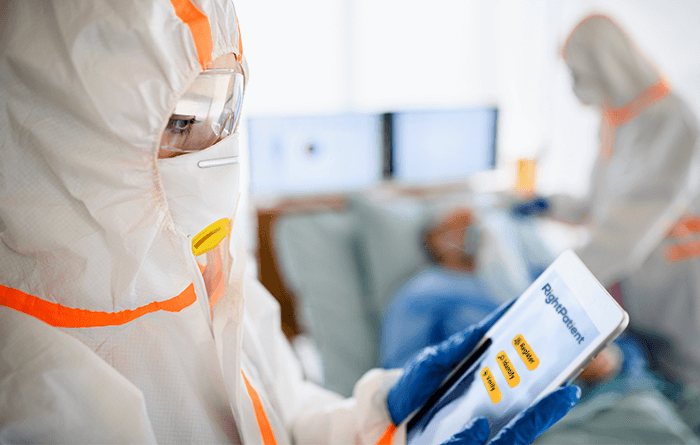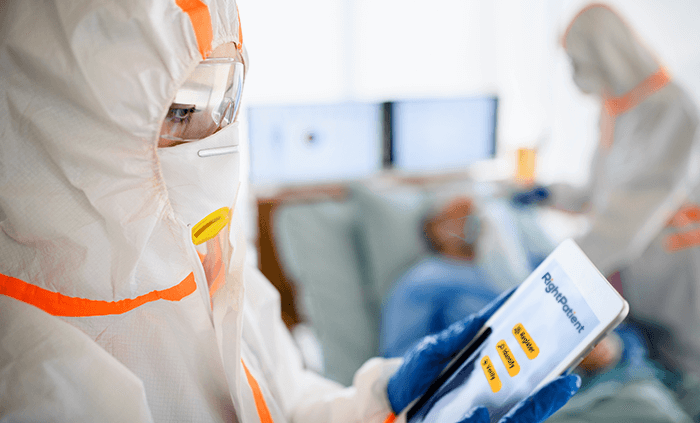Patient Identification in Hospitals is in Dire Need of an Upgrade After COVID-19

COVID-19 has changed the world around us in unprecedented ways. In fact, it is still shaping how we will interact with each other in the future for years to come. Social distancing, ensuring proper hygiene at all times, and wearing PPE whenever we step outside have become the norms and it will be so for quite some time. Naturally, hospitals have been the most affected parties due to the coronavirus, since they are the ones treating the patients. As different parts of the US are opening up gradually, it is quite natural that healthcare providers would open their doors too. However, changes are advised to ensure that patient safety is improved while hospitals are reopening. One of the most important changes required is the overhaul of patient identification in hospitals since that is usually the first point of contact for both patients and caregivers. Let’s look at why most of the current patient identifiers can pose threats now, and how a touchless solution like RightPatient is the only choice going forward.

Why is patient identification in hospitals important?
Patient identification errors have been haunting the US healthcare system for a long time now. The consequences of patient misidentifications can be quite severe for both providers and patients. Patients can suffer from shocking bills, the wrong treatment, repeated care or lab test results, and even death. Providers, on the other hand, may experience denied claims, unwanted attention, the costs associated with fixing duplicate records and overlays, and loss of goodwill. As can be clearly understood, patient identification errors can cause irreparable damage to all those who are associated with them. But how is the US healthcare system identifying its patients?
What patient identification was before COVID-19
Patient identification in hospitals has, admittedly, been quite fragmented. Different providers use different strategies to identify their patients. Let’s look at some of the common means of patient identification along with their pros and cons, as well as why RightPatient is the perfect choice for accurate patient identification.
Even though there are a variety of patient identification solutions available, some hospitals still prefer to use the decades-old method of identifying patients by asking them questions to find their respective EHRs. The EHR user may ask the patients to state their names, addresses, DOB, ID numbers (if appropriate), and so on. The only good thing about this is it is mostly touchless. However, the costs outweigh the only benefit of this archaic method. It is slow, tedious, time-consuming, and cannot detect if someone else is pretending to be the patient, leading to medical identity theft.

Another popular method is using patient ID wristbands. While this is more accurate than just asking questions, it has its drawbacks as well. It can be transferred or stolen, leading to others using healthcare services assigned for a different patient, committing medical identity theft. More importantly, it is also contact based, something which everyone is quite reluctant to do nowadays, but more on that later.
One of the most accurate ways to identify patients is by utilizing features patients do not share with anyone else, that is, the features that are unique to them. This is where biometrics comes into play. For instance, modalities like fingerprint and palm-vein scanning drastically improve accurate patient identification. However, these would require the patients to touch the devices for identity verification, which was off-putting for leading healthcare providers. These would cause infection control issues. For instance, a patient with a contagious disease could come in, touch the device, and effectively contaminate it, unless it is cleaned after every usage. It would be a nightmare for all those involved in the process.
What COVID-19 taught us
Prior to the pandemic, not many patients would have thought about it. After COVID-19, however, the majority of patients would be extremely reluctant to use touch-based solutions for patient identification, as they have a fear of contracting the highly contagious virus now. Thus, acceptance rates for touch-based solutions would be quite low now. Thus, patient identification in hospitals needs to be upgraded to enhance patient safety as well as accuracy.
So, what are the leading healthcare providers using for accurate patient identification?
What patient identification should be after COVID-19
The leading touchless biometric patient identification platform, RightPatient, is being used by providers like Grady Health, Duke Health, and University Health Care System. So, what makes RightPatient so different yet effective?
It locks the medical records of the patients with a photo of them upon registration. When registered patients return, all they need to do is look at the camera; the platform recognizes them and produces the correct medical record within seconds. All of this can be done easily and without a single touch from the patient!
RightPatient ticks all the right boxes – it ensures accurate patient identification, successfully prevents medical identity theft, reduces denied claims, prevents new duplicate records, and enhances patient safety by providing them a touchless solution. All of these benefits lead to boosting the bottom line of healthcare providers – something that they really need right now.
RightPatient has been protecting over ten million patient records already, and with the COVID-19 pandemic, it has become the only viable solution. Are you still using outdated platforms? It is high time to make the change and upgrade to RightPatient.









Leave a Reply
Want to join the discussion?Feel free to contribute!